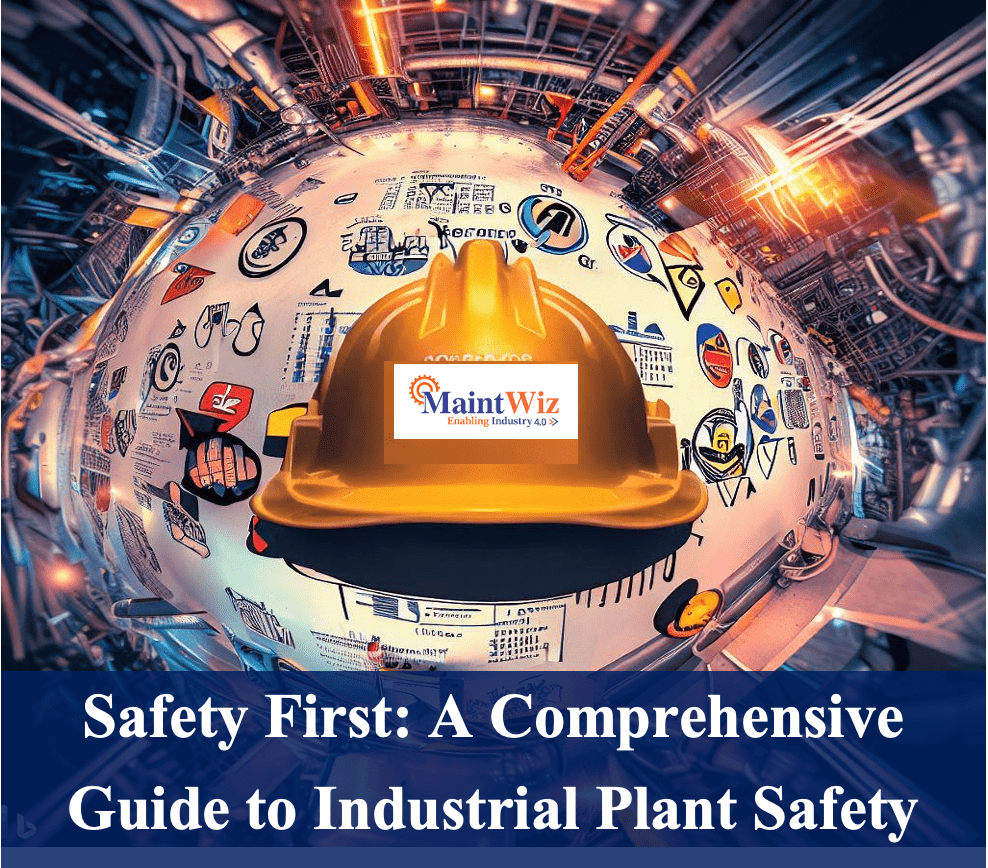
Table of Contents
ToggleIntroduction to Industrial Plant Safety
Industrial plants can be hazardous places to work due to the presence of various potential hazards. The safety of workers in such environments is of utmost importance to ensure a safe working environment. Industrial plant safety refers to the measures taken to minimize the risk of accidents, injuries, and other incidents in industrial facilities. These facilities include manufacturing plants, chemical plants, refineries, and others.
Importance of Workplace Safety
Workplace safety is critical for any organization. It protects employees from injury and illness, reduces the risk of accidents and incidents, and helps organizations comply with regulations. Workplace safety is also essential for productivity and profitability. Safe workplaces promote employee well-being and can improve employee morale, which can lead to increased productivity and job satisfaction.
Common Workplace Hazards and How to Mitigate Them
There are many hazards present in industrial plants that workers can face. These hazards can include chemical exposure, electrical hazards, confined spaces, and more. Mitigating these hazards requires identifying them and taking the necessary steps to control or eliminate them. This can include using personal protective equipment (PPE), implementing safety protocols and procedures, and conducting regular safety audits and inspections.
Overview of Safety Equipment and Personal Protective Equipment
Personal protective equipment (PPE) is essential in ensuring the safety of workers in industrial plants, including those working with a condition monitoring system. PPE includes equipment such as hard hats, safety glasses, gloves, and respirators. It is crucial to provide the appropriate PPE to workers and ensure that they know how to use it properly. Additionally, safety equipment such as fire extinguishers and emergency showers should be readily available and maintained in good condition to provide a safe working environment.
Safety Training and Emergency Preparedness
Safety training is necessary for all employees working in industrial plants. It includes training on hazards present in the workplace, how to use PPE, and emergency procedures. Emergency preparedness is also critical, as accidents and incidents can occur at any time. Organizations should have emergency plans in place and conduct regular drills to ensure that employees know what to do in the event of an emergency.
Conducting Safety Audits, Inspections, and Hazard Identification
Regular safety audits and inspections are necessary to identify hazards in the workplace and ensure that safety protocols and procedures are being followed. Hazard identification involves identifying potential hazards and taking the necessary steps to control or eliminate them. This can include implementing engineering controls, administrative controls, and PPE.
Safety Protocols and Regulations to Follow
Organizations must follow safety protocols and regulations to ensure compliance and promote safety in the workplace. These protocols and regulations can vary depending on the industry and location of the organization. For example, the Occupational Safety and Health Administration (OSHA) sets regulations for workplace safety in the United States. Failure to comply with these regulations can result in penalties and fines.
Promoting a Safety Culture and Leadership
Promoting a safety culture is essential for ensuring the safety of workers in industrial plants. A safety culture involves prioritizing safety in all aspects of an organization and promoting a safe working environment. Leadership plays a crucial role in promoting a safety culture, and managers should lead by example and prioritize safety in all decision-making processes.
Incident Reporting and Near Miss Reporting
Incident reporting involves documenting any accidents, injuries, or other incidents that occur in the workplace. This information is essential for identifying areas of improvement and implementing corrective actions to prevent future incidents. Near miss reporting involves reporting incidents that could have led to an accident or injury but did not. Near miss reporting can help identify potential hazards and prevent accidents from occurring in the future.
Behavior-Based Safety and Safety Perception Survey
Behavior-based safety focuses on identifying and modifying behaviors that can lead to incidents and accidents in the workplace. This approach involves promoting safe behaviors and discouraging unsafe behaviors through training and positive reinforcement. Safety perception surveys can help organizations identify areas for improvement and gather feedback from employees on safety culture and leadership.
Building a Safety Committee and Effective Safety Communication
A safety committee can help promote a safety culture and ensure that safety protocols and procedures are being followed. The committee should include representatives from all levels of the organization and meet regularly to discuss safety concerns and identify areas for improvement. Effective safety communication is essential for ensuring that all employees understand safety protocols and procedures and feel comfortable reporting safety concerns.
Safety Education and Setting Safety Goals
Safety education is critical for ensuring that employees understand the hazards present in the workplace and how to protect themselves. Setting safety goals can help organizations prioritize safety and track progress towards improving safety in the workplace. Safety goals should be specific, measurable, and achievable.
Importance of Safety Awareness and Continuous Improvement
Maintaining safety awareness is critical for ensuring that employees remain vigilant and aware of potential hazards in the workplace. Continuous improvement involves identifying areas for improvement and implementing corrective actions to prevent future incidents. Organizations should regularly assess their safety programs and make changes as necessary to improve safety performance.
Industrial Hygiene and Occupational Health
Industrial hygiene involves identifying and controlling workplace hazards that can lead to illness or injury. This includes monitoring air quality, noise levels, and chemical exposure levels. Occupational health involves monitoring and managing the health of employees in the workplace. This can include providing medical monitoring for employees who may be exposed to hazardous substances.
Electrical Safety, Machine Safety, and Lockout/Tagout
Electrical safety is critical for ensuring that workers are protected from electrical hazards such as electrocution and electrical fires. Machine safety involves ensuring that machinery is properly maintained and operated safely to prevent injuries. Lockout/tagout involves ensuring that machinery is properly locked out and tagged out before maintenance or repair work is performed.
Confined Space Safety, Chemical Safety, and Fire Safety
In addition to confined space safety, chemical safety, and fire safety, another critical aspect of workplace safety is maintenance prevention. By implementing preventive maintenance measures, organizations can identify and address potential hazards before they become major issues. This includes regular inspections, maintenance, and repairs of equipment and machinery to prevent breakdowns and ensure safe operation.
Ergonomics, Fall Protection, and Heat Stress
Ergonomics involves designing workstations and equipment to reduce the risk of injury and strain. Fall protection involves providing the necessary equipment and training to protect workers from falls. Heat stress involves ensuring that workers are protected from heat-related illnesses such as heat exhaustion and heat stroke.
Safety Culture Assessment and Safety Program Evaluation
Assessing safety culture involves measuring employee perceptions of safety culture and identifying areas for improvement. Safety program evaluation involves assessing the effectiveness of safety programs and identifying areas for improvement.
Safety Data Analysis and Performance Metrics
Analyzing safety data and performance metrics can help organizations identify areas for improvement and track progress towards improving safety performance. Metrics can include incident rates, near miss rates, and safety culture survey results.
Behavior-Based Safety and Safety Coaching
Behavior-based safety programs focus on encouraging safe behavior and identifying and correcting unsafe behavior. Safety coaching involves providing feedback and guidance to employees on their safety performance and helping them improve their safety skills.
Safety Meeting, Observation, and Documentation
Safety meetings provide a forum for discussing safety concerns and sharing information about safety protocols and procedures. Safety observations involve identifying potential hazards and unsafe behaviors in the workplace. Documentation of safety procedures and incidents is essential for ensuring that all necessary information is available for analysis and improvement.
Safety Commitment and Accountability
Safety commitment involves ensuring that all employees understand the importance of safety and are committed to following safety protocols and procedures. Accountability involves holding employees and managers responsible for their actions related to safety and enforcing consequences for non-compliance.
Safety Compliance and Management System
Ensuring compliance with safety regulations and protocols is critical for maintaining a safe working environment. Implementing a safety management system can help organizations effectively manage safety and ensure compliance with regulations.
Safety Culture Change and Continuous Improvement
Creating a culture of safety requires a commitment to continuous improvement and a willingness to adapt to changing circumstances. Organizations must be open to feedback and willing to make changes as necessary to improve safety performance.
Conclusion
Industrial plant safety is a critical aspect of ensuring a safe and productive working environment. By implementing effective safety protocols and procedures, organizations can minimize the risk of accidents, injuries, and other incidents in the workplace. A culture of safety requires a commitment to continuous improvement and a willingness to adapt to changing circumstances. By prioritizing safety and promoting a culture of safety, organizations can ensure the well-being of their employees and improve their overall performance.

Jai Balachandran is an industry expert with a proven track record in driving digital transformation and Industry 4.0 technologies. With a rich background in asset management, plant maintenance, connected systems, TPM and reliability initiatives, he brings unparalleled insight and delivery excellence to Plant Operations.
Recent Posts
- From Chaos to Order: Simplifying Maintenance Management with Technology
- From Crisis to Control:Regaining Stability with Effective Breakdown Response
- Avoiding Pitfalls: The 7 Biggest Mistakes Plant Managers Make in Maintenance
- Quality Matters: Improve OEE by Reducing Defects and Rework with MaintWiz CMMS
- How to Implement an Effective Lubrication Program for Your Plant Maintenance Strategy
Recent Comments
Company




